Hi, I’m Tandena Wagner. As part of my research for EcoResillience Initiative (an EA organization searching for the best ways to preserve biodiversity into the long-term future), I’ve investigated several common claims that resource limitations could be disastrous for civilization – ie, that we’re approaching “peak oil”, or imminently running out of phosphorus, soil nitrogen, chromium, etc. For the most part, I’ve found these claims to be overblown, often systematically exaggerated by the poor epistemic conditions of activist environmentalism. In general, Paul-Erlich-style resource limitations do not seem pressing compared to other risks to civilization.
However, there’s one key resource that I’ve become increasingly concerned about: human civilization might be running out of low-hanging fruit.

Low-hanging fruit is essential for continued human thriving
You might be like, “Whatever, this doesn’t sound like a huge problem -- fruit is tasty, sure, but people don’t NEED to eat fruit, right?”
That’s what we thought, too. But after digging into the research, it turns out that low-hanging fruit is critical for continued progress across diverse scientific fields. For example, according to wikipedia, “some suspect a lack of low-hanging fruit as a significant contribution to Eroom's law”, which states that drug discovery is getting slower and more expensive over time.
Low-hanging fruit is also a key input to broader increases in living standards. In the past, when low-hanging fruit was more common, countries like South Korea could go from subsistence poverty to joining the ranks of the world’s richest nations in just a single generation. But nowadays, the Center for Global Development admits that poor countries are staying poor for longer, because “there’s not a lot of low-hanging fruit in global development.”
Perhaps the most comprehensive exploration of this issue comes from Tyler Cowen’s 2011 opus, “The Great Stagnation: How America Ate All the Low-Hanging Fruit of Modern History”. In the book, he argues:
Our economy has enjoyed low-hanging fruit since the seventeenth century. But during the last forty years, the low-hanging fruit started disappearing, and we started pretending it was still there. We have failed to recognize that we are at a technological plateau. The fruit trees are barer than we want to believe. That's it. That is what has gone wrong and that is why our politics is crazy.
More recently, some economists have started to push back on Cowen’s ideas, postulating that maybe AI will help humanity escape the Great Stagnation. But even here, fruit is a crucial bottleneck. Just a few months ago, Google CEO Sundar Pichai said of generative AI:
I think the progress is going to get harder. When I look at 2025, the low-hanging fruit is gone.
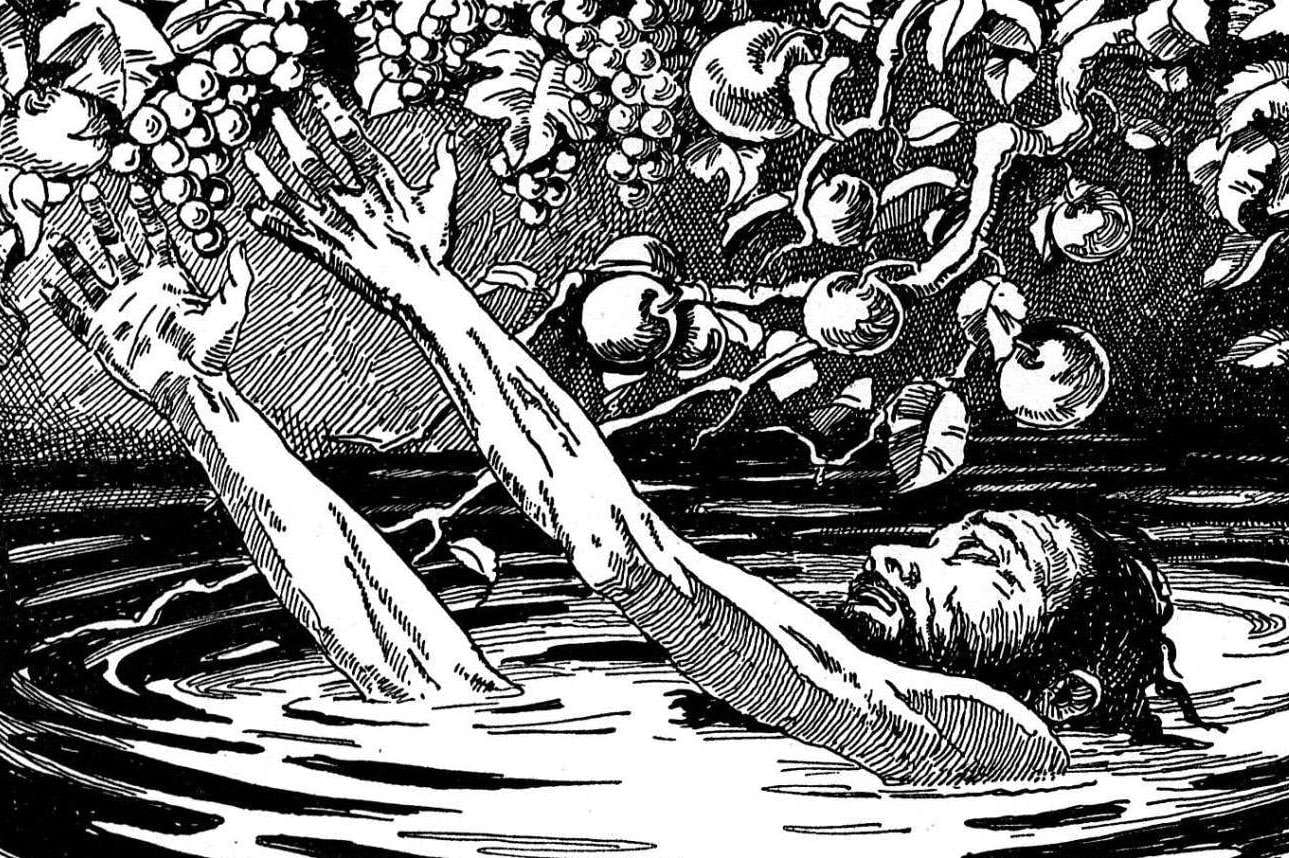
What would it mean if humanity exhausted the low-hanging fruit?
If we ever completely ran out of low-hanging fruit, the consequences could be catastrophic. Consider: the last time humans ran out of low-hanging fruit, we were forced to abandon our natural foraging lifestyles and move out onto the harsh, barren landscape of the savannah. There, we faced intense predation from hyenas, and had to learn how to crack open bones and eat marrow just to survive. Ultimately, humanity was only able to escape this hellish condition by inventing agriculture, which was even more of an unmitigated disaster for human wellbeing.

Between this ominous historical precedent and the warnings of the world’s top scientists and economists, we think it’s safe to say that this is an extremely pressing threat -- one that should be taken seriously by the EA movement.
New ways of making fruit hang lower are getting harder to find
When we first began to look into this problem, we asked ourselves – couldn’t people just, like, use ladders to reach more fruit? Or, idk, maybe use some kind of picking device on the end of a long stick?
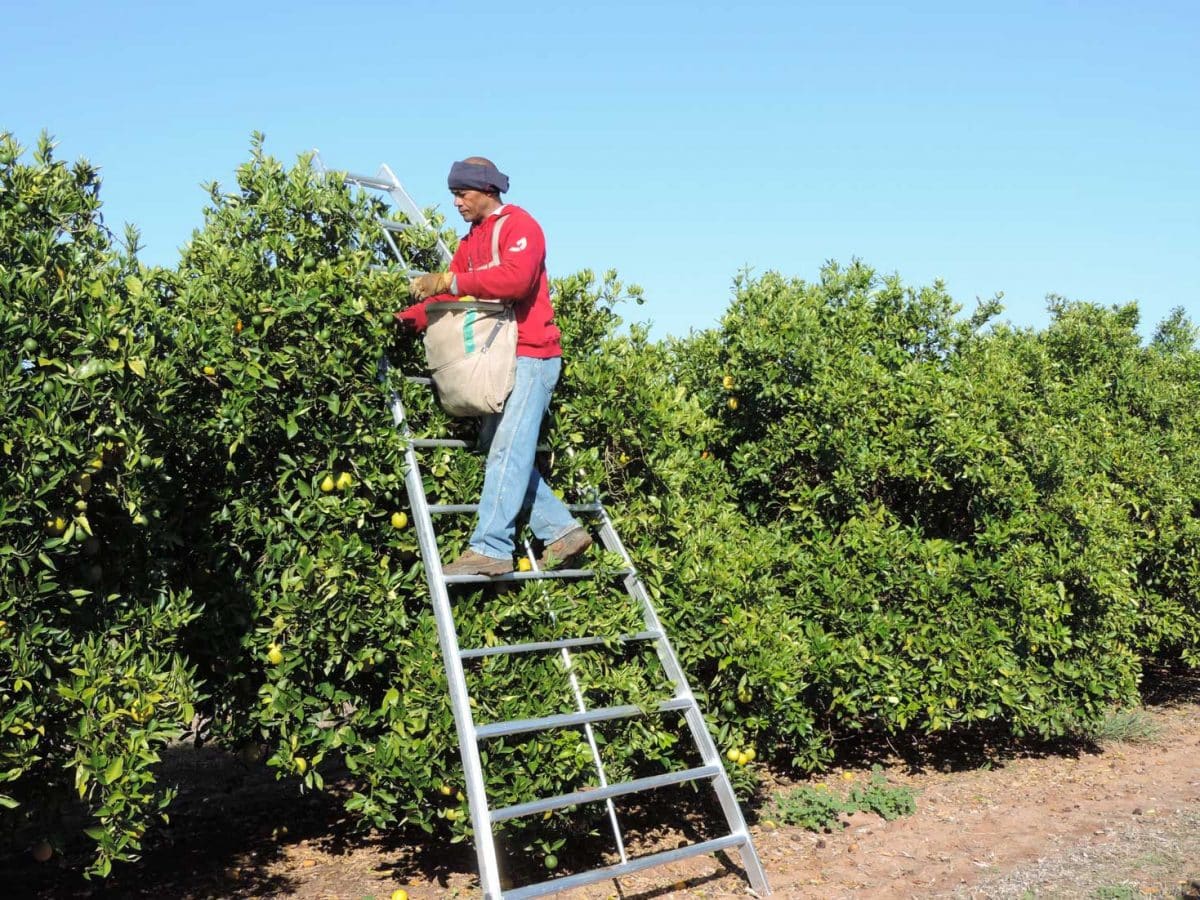
But we were dismayed to learn that these ideas are ALREADY in widespread use, and indeed, have been for literally hundreds of years. In other words: the low-hanging fruit of picking low-hanging fruit, has been picked.
Indeed, humanity is being forced to spend more and more resources picking low-hanging fruit, despite the diminishing returns such investments face. Just look at this guy using a preposterously tall tower to pick fruit:
[EDIT: as Julia Wise points out in a comment, this type of machine is called a "cherry-picker". He's picking cherries. So, this specific example is cherry-picking, but hopefully it's broadly representative of fruit issues generally.]

People are climbing literally hundreds of feet into the rainforest canopy just to get some little epiphytes or whatever:
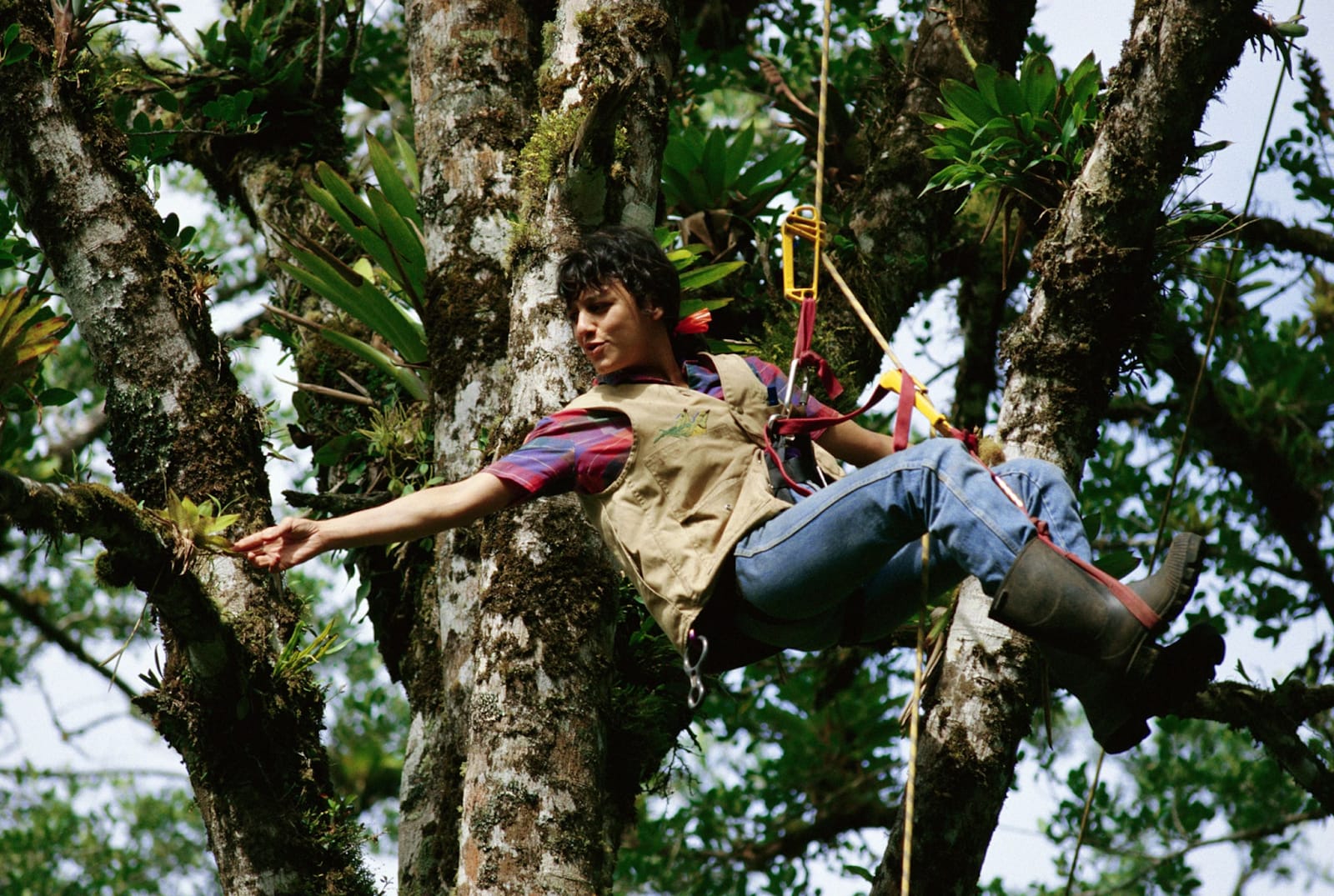
Simply reaching higher and higher is no longer fruitful. We need a new strategy.
Shorter trees --> lower fruit
We believe that the most promising intervention in this area is to genetically engineer shorter trees, such that more of their fruit hangs low.
People are already successfully doing this with apples??? In the late 1960s, most apple trees in the USA were 25 to 30 feet tall. But apparently, over the following decades, farmers discovered that “dwarf” trees are actually better:
Once hesitant that the smaller trees wouldn’t produce as much fruit, apple growers realized dwarf trees were actually far more profitable. “Farmers get a higher yield per acre,” says Heather Faubert, of the Rhode Island Fruit Growers Association. “With the taller trees, you could only plant about 20 trees per acre; now, you can get as many as 2,000 in the same space.”
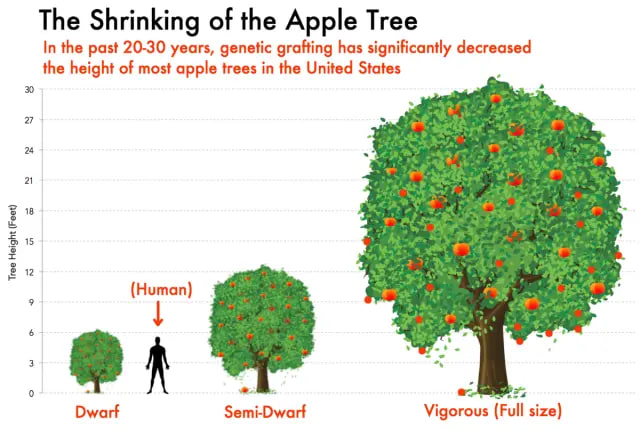
So, this is a promising approach, but can we push even further? Or, in other words, “How low can you go?”
Some fruit doesn’t even grow on trees -- strawberries are basically ground cover, which is about as low as fruit can possibly get. Could we genetically engineer more types of fruit to just sit around on the ground like this -- not part of a tree with a woody trunk at all?
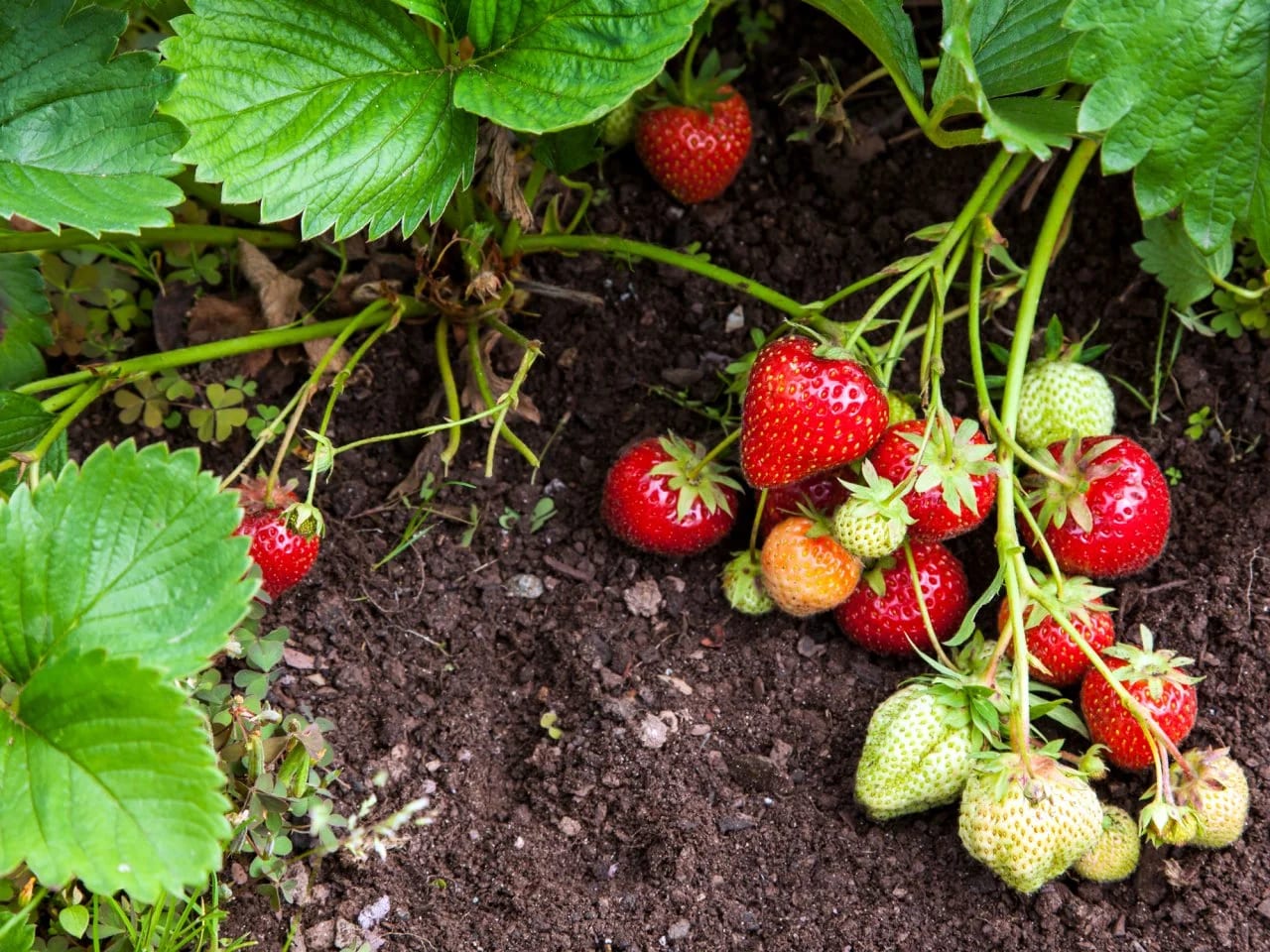
The idea of transforming towering, majestic trees into mere herbs might sound far-fetched, until you read this post from Eukaryote Writes Blog, and you realize that:
“Trees” are not a coherent phylogenetic category. On the evolutionary tree of plants, trees are regularly interspersed with things that are absolutely, 100% not trees.
Plants just kind of evolve rigid, woody stems all the time, randomly:
Of plants native to the Canary Islands, wood independently evolved at least 38 times!
By the same token:
The reverse also happens – a tree needs to do both primary and secondary growth, so it’s relatively easy for a tree lineage to drop the ‘secondary’ growth stage and remain an herb for its whole lifespan.
Researchers have already shown that by knocking out a couple of genes, it’s possible to prompt the herbaceous plant Arabidopsis to develop “a woody stem never otherwise seen in the species”.
In light of this surprising information, we believe that the goal of genetically engineering extremely low-to-the-ground, non-woody fruit trees, far from being a sci-fi dream beyond humanity’s grasp, is in fact probably within reach.
Low-hanging fruit has broad benefits
Growing lower-hanging fruit would improve agricultural productivity almost by definition. This is a major focus of philanthropic organizations like the Gates Foundation. In the rich world, farmers are already profit-motivated to maximize yields, so further improvements would require genetic engineering, as discussed above. But in poor, remote areas, farmers often merely lack knowledge or simple tools that could unlock higher productivity, so there is still much low-hanging fruit (eg, switching to dwarf tree varieties) to be picked.
Increased agricultural productivity is an especially beloved intervention among groups like EcoResillience Initiative that care about both human thriving and ecological preservation. That’s because, as Hannah Ritchie explains in this OurWorldInData article and in her book Not The End of the World, sustainably intensifying agriculture is a great way to boost development, while also reducing the total amount of land that humanity uses to feed itself. Since habitat loss (not climate change, invasive species, hunting, or etc) is still the #1 cause of species extinctions worldwide, reducing human land use via increased agricultural productivity is great for nature.
But even moreso than with other agricultural-productivity interventions (like increased use of fertilizers in poor countries, zai pit irrigation, genetically-engineered C4 rice, ecologically-informed silvopasture techniques, etc), I’m especially excited about the unique benefits that low-hanging fruit could have for wild animal welfare.
The Fruit is Too Damn High
Currently, many animals are trapped in a negative-sum Red Queen’s race where trees get ever taller to pull their fruit out of reach, and animals have to evolve ever-crazier tricks to keep getting the fruit. Behold: this preposterous looking creature isn’t just a really badly photoshopped deer. It’s actually a REAL mammal, called a “Gerenuk”:

Or what about these guys? I dare you to look at this photo and tell me that what’s going on here is totally normal, fine, to be expected, non-ridiculous, etc:
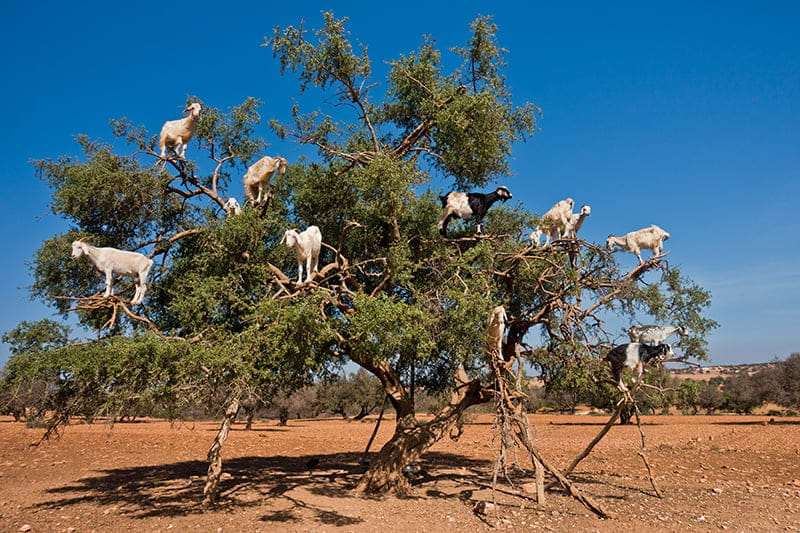
Most notably, giraffes are stuck in an arms race against ever-taller acacia trees:

Consequently, their biology is incredibly cursed:
1. The “recurrent laryngeal nerve” connects the brain to the muscles in the throat. But even though the throat is right next to the brain, evolution is too stupid to figure out how to unloop the nerve from where it pointlessly loops around the aorta. So nerve signals have to go ALL the way down to the chest and then all the way back up. This means that giraffes experience crazy lag time of up to a fifth of a second (that’s like 12 frames of lag if you’re playing a 60fps videogame!) whenever they try to swallow anything or make any sound.

2. Since giraffes are so tall, it means they need absurdly high blood pressure in their heart, so they don’t pass out from lack of blood pressure in the brain when they stretch their head all the way up. But this means they experience INSANELY high blood pressure when they put their head DOWN, to drink! It’s suspected that this is the current #1 bottleneck preventing giraffes from becoming even taller, and scientists literally do not know how giraffes manage to run around with their cursed cardiovascular system without immediately dropping dead from strokes, preeclampsia, fibrosis, or a dozen other related ailments.
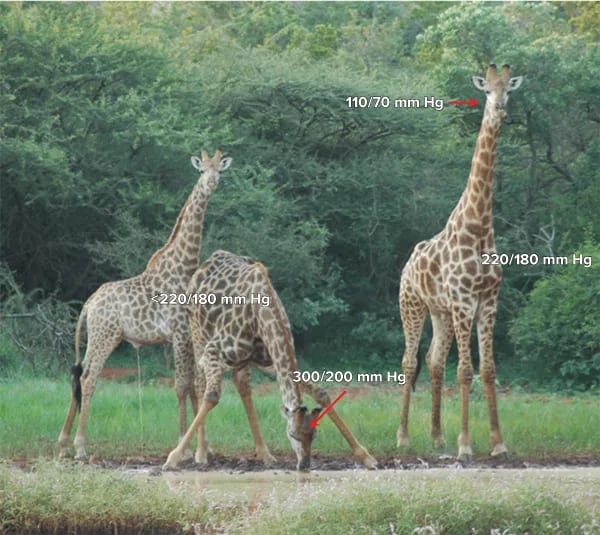
If we just pushed the “reset” button on this entire fucked-up situation, we could go back to having normal-sized, non-cursed giraffes browsing nice, normal-sized acacia trees. The giraffes AND the trees would be better off. This is the kind of win-win solution to a multipolar coordination trap that, to me, would represent the EA movement at its best.
A fruitful direction for future research
Some people say that ideas are getting harder to find over time. Maybe that’s true! But today, I found one: low-hanging fruit.

For the sake of both the sustainability of humanity’s continued long-term economic growth, AND for the giraffes, I believe that EA should devote more resources to this important cause area.

Nice piece, but I feel like many of the examples were cherry-picked to be alarming.
This is easy to say now, but what if we run out of low-hanging cherries to pick?
An even more neglected problem: low-floating fruit. Seagrass produces fruit[1], some of which (halophila decipiens) has been found hanging at depths of 190 feet (58 meters)[2]. This is an absurdly submerged fruit, not even reachable for giraffes. Somebody should be on this.
https://en.wikipedia.org/wiki/Seagrass#Sexual_recruitment
https://ocean.si.edu/ocean-life/plants-algae/seagrass-and-seagrass-beds
Executive summary: The article proposes "low-hanging fruit" as a literal new cause area for effective altruism, arguing that the depletion of easily accessible fruit represents a major constraint on human progress, economic growth, and wild animal welfare that could be addressed through genetic engineering of shorter plants.
Key points:
If the clear goal that most would agree with is to be able to lay around on the ground and still be able to feed yourself, strawberries are clearly the future. Or anything reachable by the average human arm length from the ground to the fruit, maybe bushes seem the best here.